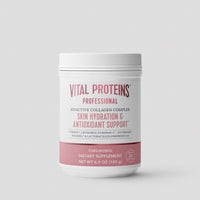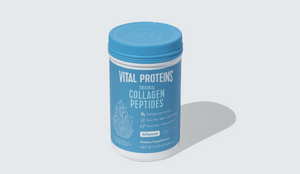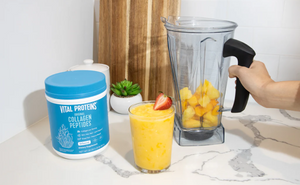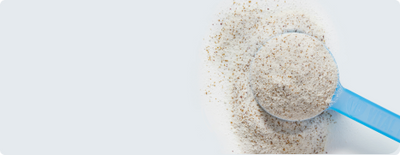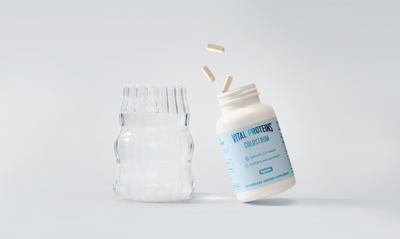Given all the elbow grease that goes into it, some curly-haired girls view their mane as the bane of their existence. Curly hair is inherently dry, prone to breakage and requires a lot of care (and sometimes a large arsenal of products). But curly hair can also be bold, soft and crown your head like a halo.
You just need the right tips, techniques and products! For this, we turned to the haircare experts who know best. Read on for a curly hair guide you'll want to read with a fine-toothed comb.
First things first, you must understand your curl type.
You've probably heard of curl types. But with names for curl patterns like 2a and 3c, decoding your curl type can feel an awful lot like math class. But unlike math class, you'll actually want to pay attention. Knowing your curl type unlocks a berth of important information, such as which products to use and which ingredients to stay away from, specific instructions for caring for your curl type and more.
The best way to determine your curl type is by going au natural. "Without using conditioner or styling products, allow your hair to dry naturally," advises Ghanima Abdullah, the cosmetologist and hair expert at TheRightHairstyles.com. "Then, pluck one and compare the structure to a hair type chart."
These are the traditional four hair types:
- Type 1 (straight)
- Type 2 (wavy)
- Type 3 (curly)
- Type 4 (coily)
From there, there are sub-classifications for each. For example, Chardai Tisdale, stylist and owner of Black Balled Beauty Supply and Salon, explains the different traits, starting with wavy hair, which she says forms an S-shape. This can be classified as 2a-2c.
"The traditional 'curly' hair is usually a little tighter and forms a corkscrew and C-formation. This pattern can be classified as 3a-3c," Tisdale explains.
Finally, the tightest curl pattern has a coil shape and usually forms a Z-shape when placed flat on the hand for inspection. "This pattern can be classified as 4a to 4c," she says. Many factors affect a person's curl pattern, such as their ethnicity, family genetics, diet, water intake and hair care regimen, adds Tisdale.

How to care for curly hair
Now that you know your curl type, use these tips from the pros to tame that mane.
Wash your hair minimally
Let's be real: caring for curls can feel like a full-time job. So it's only fair that you give yourself — and your curls — a break. Doing so preserves natural oils in your hair. Without it, "your curls will become dry and stringy rather than shiny and springy," says Nadia Charif, hair, skin and body health advisor and registered dietitian at Coffeeble.
Many curly-haired gals use the no-poo method, which is when you wash your hair without the use of shampoo or use shampoos that are low-lather. Charif says you can still condition and rinse with this method. But be sure to use cool to cold water since this contracts the hair strands and creates buoyancy, she adds.
Avoid heat styling
"Heat has the ability to manipulate the natural structure of hair," Dee Poulsen, founder of lovedbycurls.com tells Lively. "This can not only cause breakage and frizz, but it can completely change your curl pattern."
You don't have to swear off heat forever — simply take a break whenever you can. This lazy-girl hack by Charif is sure to help. She says to take a slow walk in the sun after washing the air or crack the car windows when driving to let wind in. "Both will dry your curls while creating non-frizzy volume."

Use sulfate- and silicone-free products
Growing up, you probably weren't too concerned about the ingredient listed on the back of your shampoo bottle. But as you've gotten older and delved deeper into the world of curly hair care, you've probably heard about sulfate and silicone. Neither are good for your hair.
"Sulfate is found in most shampoos, but this harsh chemical can strip the scalp of its natural oils causing dry hair, frizz and split ends," says Poulsen.
Even if you don't know what this is still, you've felt it; it's what causes shampoo to lather. "Silicone, which is found in conditioners, can also cause problems as it coats hair strands in a wax-like substance."
As for the ingredients the hair pros do recommend, biotin and collagen are top of the list, says Tisdsle. By the way, Vital Proteins® Hair Boost™ provides both! ($30; shop now) You should also look for protein and fatty oils that can seal in moisture, such as avocado and grapeseed.
Related Articles
Don't brush or comb your hair
There are two main reasons you want to avoid this. First, curly hair breaks easily. And two, have you ever brushed dry, curly hair? If so, you already know the frizzy, lion's mane it turns into. Charif says that the only brushing you should be doing is in the shower.
"As you work the hair follicles at the scalp, pull your fingers gently through. This is the only brushing or combing you're allowed to do," she explains.
There are no rules against massaging the hair; you should massage the scalp with fingertips while applying a hair mask once per week. Use products with lots of moisture. Out of all the hair types, curly hair requires moisture most.
"Hair is a protein, so just like muscles, it requires certain vitamins, nutrients and consistent care," Tisdale tells Lively. It also needs lots of hydration. "Water should be the base of the product," she says. "So curly girls should stay away from anything with alcohol, unnatural perfumes and any other drying agents."





